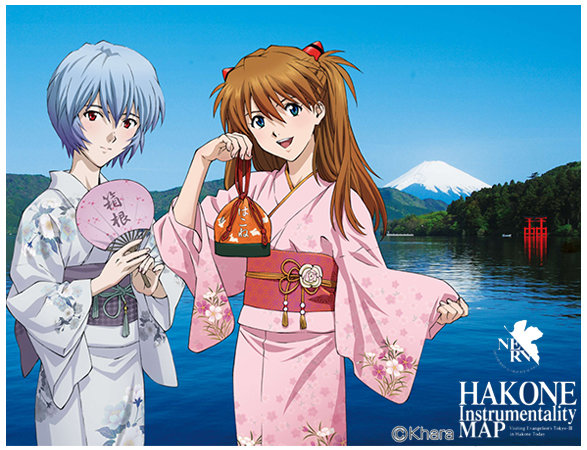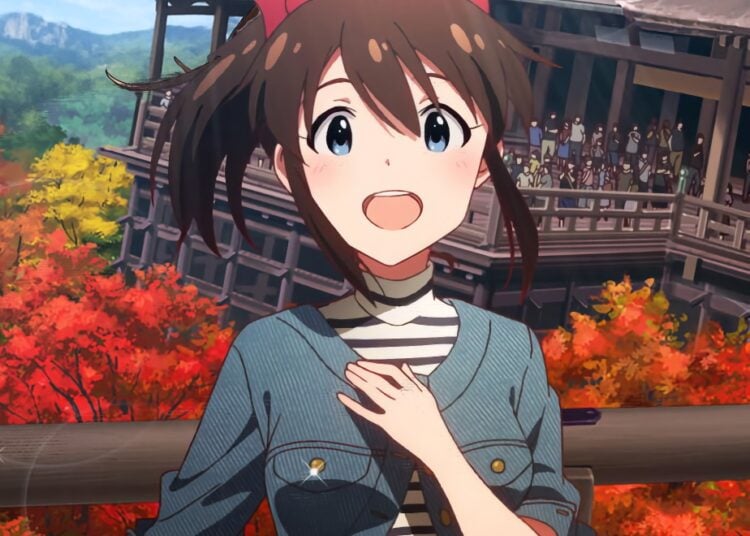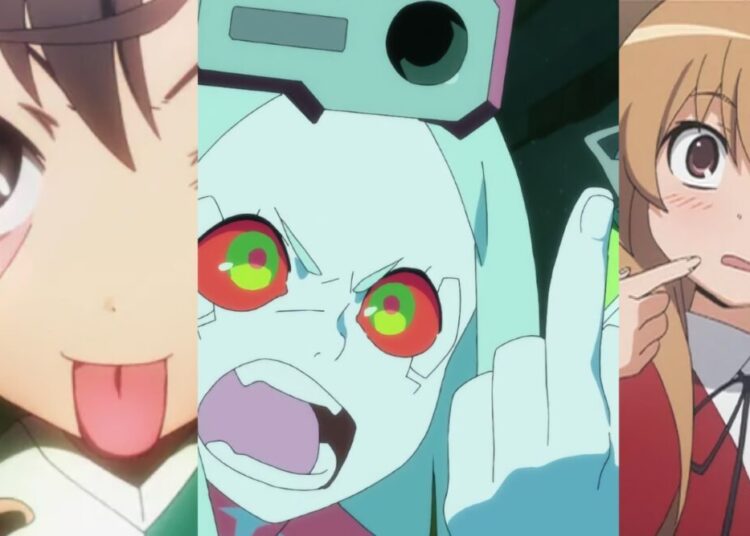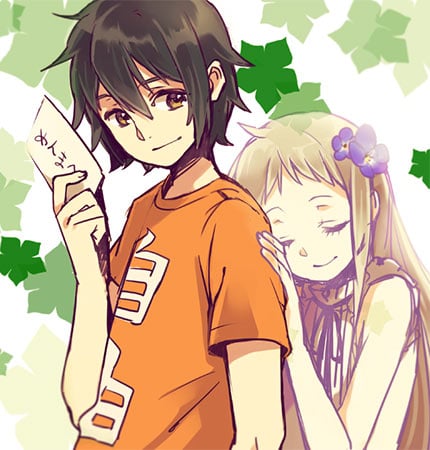I took a couple of days off this week to travel with an Italian friend of mine to Hakone, a pleasant mountain town famous for hot springs and onsen tamago, eggs boiled in natural hot spring water. Hakone is the setting of Evangelion, of course, and part of the fun of going there is doing 聖地巡礼 seichi junrei, “making a pilgrimage to the holy land,” e.g. visiting the actual places seen in the anime series.
The trend of setting anime series in real places isn’t really new: many shows of the 1980s were set in the Tokyo’s hip Shinjuku district, and the first thing I did after arriving in Japan in 1991 was visit the famous Studio Alta TV from Megazone 23. The trend got moving in earnest when series like Please Teacher/Please Twins and Lucky Star showed that rural regions of Japan could find significant economic benefit by promoting “otaku tourism,” allowing their towns to be used as the settings for anime series then profiting from the increase in tourists. (In some cases, including Hanasaku Iroha and Lagrange: The Flower of Rin-ne, municipalities actually provided funding to the animation studios in the hopes that otaku tourism would prove a boon to the region later.) So the next time you come Japan, you can spend some time relaxing at the coffee shop visited 15,527 times during the Endless Eight arc in Haruhi, search for Menma while exploring the town from AnoHana, or have a picnic in the park where Kyosuke and Kuroneko went on their first date.We were staying at a nice hotel with several traditional onsen baths, which is of course something gaijin love to experience when in Japan. When I asked my Japanese wife to find a good hotel for us, a funny thing happened: she kept suggesting modern hotels with sleek lines and steel-and-concrete construction to us, which looked more like art galleries than traditional ryokan inns. All we want, I told her, is a fantastic experience with tatami mats and yukata to wear and traditional sashimi to eat, but as a Japanese her idea of what would be a good hotel was different from ours. One of the attractions of the Hakone area is the beautiful views of Mt. Fuji you can discover as you drive around Lake Ashinoko, and it was great getting to see Japan’s most famous mountain from so close.
Though I love Mt. Fuji, I’ve never been able to interest my wife in a trip to this part of Japan. Part of it is that she’s more fascinated with the U.S. and Europe than she is of her own country — she’d rather visit Los Angeles or New York, while I’d prefer to go to Kyoto. Then there’s a the Aokigahara Forest, called 樹海 jukai or “Sea of Trees” in Japanese, which sadly became a famous suicide spot after a novel published in 1960 featured the area as its setting. She doesn’t want to go anywhere near the place, sure that she’ll hear the spirits of the dead calling to her or something.As we explored the area, we stopped at Hakone Shrine to pray for good luck and freedom from Angel attacks. Japan, of course, has two main cultural traditions: Shinto, the original religion of Japan, which sees 神 kami (spirits) in trees, rocks and mountains; and Buddhism, the religion of writing and culture, which entered through China and Korea in the 6th century A.D. and which now is largely associated with funerals and honoring the dead. Of the two, Shinto is definitely the more happy and upbeat tradition, and it’s not surprising that 90% of the imagery brought to Westerners through Japanese popular culture is from Shinto, making it much more familiar to us — an unintended gift from Rumiko Takahashi and the other creators of anime and manga. One happy tradition related to Shinto is writing wishes on a wooden “wish board” called an 絵馬 ema (which we happen to have in stock here), and we saw hundreds of these hanging up at the shrine, including many prayers to pass a university entrance exam. Reading through the messages, we saw many of them were written in English, Spanish, Portuguese, and even Thai, posted by foreigners who had visited the shrine. It occurred to me that Shinto is really a gateway for people all around the world to become closer to Japan, since we’re often more familiar with its imagery than many other aspects of the country.

I had a relaxing couple of days at the “holy land” of NERV headquarters in Hakone.















